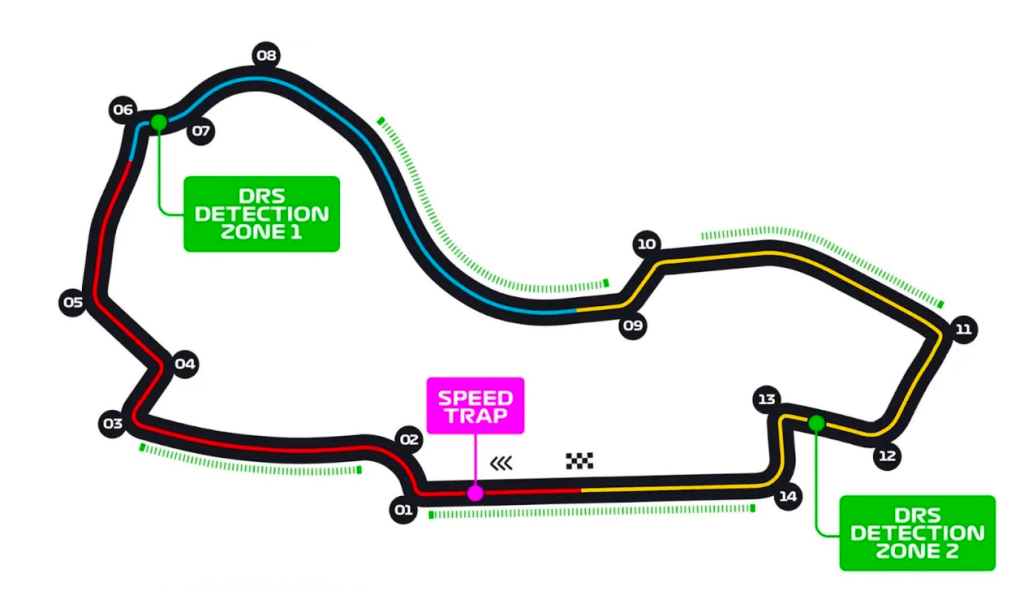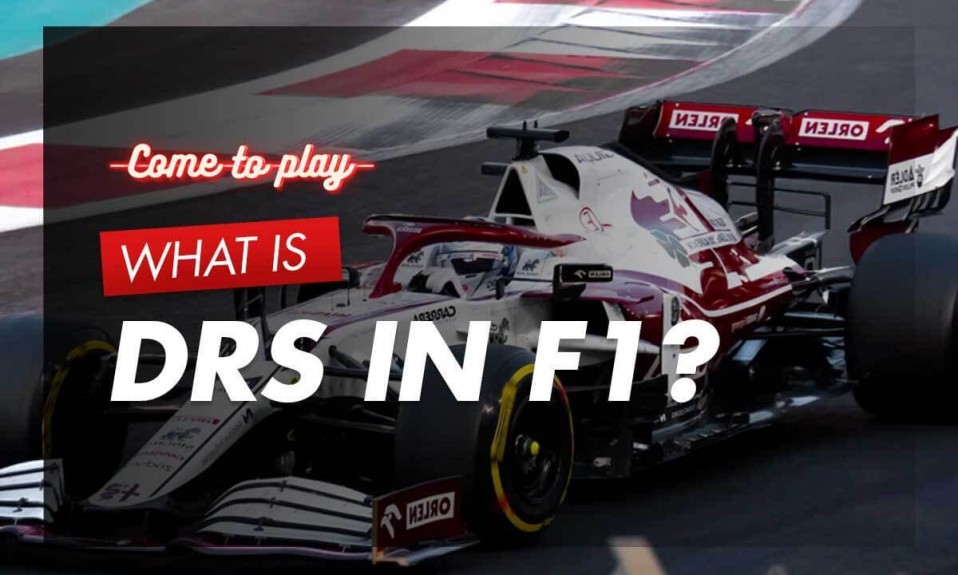Intending to make F1 car racing more thrilling, FIA introduced the Drag Reduction System (DRS) in 2011 to give drivers a better chance of overtaking their opponents.
So what is DRS in F1 exactly, how does it work, and was it really necessary?
We answer all these questions and more below!
What Is DRS in F1?
F1 cars represent the peak of vehicle engineering as they implement a myriad of modern and innovative technologies that help them become the fastest racing machines anywhere.
However, despite the incredible speed of F1 cars, races were becoming uneventful by the end of the 2000s as even the greats like Hamilton or Alonso found overtaking very difficult.
To remedy the situation and give overtaking chances to everyone, we saw the introduction of the F1 DRS—a mechanical device that reduces the car’s aerodynamic drag.
The system works via the F1 car’s modern rear wing and its two main elements: the main plane and the flap—which lifts more than 8 cm when activated to create an air inlet.
This event substantially reduces the airflow opposition (drag) at the cost of less downforce but allows the powerful F1 engine to produce more acceleration and top speed

What Can Drivers Do With DRS?
To activate the DRS in an F1 car, drivers have to press a specific button on their steering wheel when they are within one second of a rival car in a DRS-designated zone, and only after completing two racing laps (even after a safety car restart).
The button does not work if these conditions are not met—a necessary measure to curb its race-winning potential as it adds up to 15 kph of extra speed.
Also, racing directors typically prohibit the system’s use during inclement weather.
However, while the usage of DRS during Formula One races is controlled, drivers can always activate it during practice and qualifying, even if alone on track.
You might also be interested in: Why do F1 drivers get weighed?
How Many DRS Zones Are There per Track?
The number of available DRS zones varies among tracks as the system requires longer straight sections that push the car’s top speed to function properly.
Therefore, while every track has at least one such zone, FIA has been steadily increasing the number of DRS sections wherever possible, especially on tracks with several straights.
For instance, while Jeddah, Bahrain, and Austria have three DRS zones, Monaco features only one as it is a very narrow and tricky street circuit.
Note: In addition to its DRS activation zones, tracks also include DRS detection points where race control measures whether or not the cars are within a second of each other.
Will there be any tracks with four DRS zones?
For the F1 2022 season, the FIA wanted to have four separate DRS zones for the first time ever at Albert Park in Australia, but the idea was scrapped due to safety concerns.
In any case, the new zone connected turns 8 and 9, where drivers require better cornering performance since the risk of an F1 injury or worse increases in high-speed corners.
To elaborate further, with the DRS system closed, the car generates more drag, which results in increased downforce levels and faster and more controlled cornering.

Related: How to become an F1 driver?
What Other Series Uses DRS?
While Formula 1 was responsible for introducing DRS in motor racing, other series have since adopted the system to great success, particularly its seeder championships.
For instance, F2 has been using DRS since 2015, known as GP2 then, and F3 implemented it two years after that in 2017, known as GP3 until 2019.
Other notable competitions that implement DTS to make their races more thrilling and competitive are DTM since 2013 and Super Formula since 2014.
You might also like: What are intervals in F1?
Why Was DRS Considered Controversial?
When DTS was introduced in 2011, it was opposed and questioned by many fans, drivers, pundits, and team officials as they claimed it made overtaking too easy and a button push away, thus diminishing the importance of the drivers’ overtaking skills.
To compound the argument, its opponents also wondered what does DRS mean for the defending cars as they could not use the speed boost themselves (unless also behind a car), a problem further aggravated by new rules prohibiting aggressive defending.
However, the majority ultimately recognized the importance of DRS to make races fairer and consequently more interesting, as the problem of following and overtaking in dirty air was getting worse during the early to late 2000s with the new engine parity regulations.
Therefore, to avoid long car processions, DRS is here to stay for the foreseeable future.
After all, its effectiveness cannot be disputed, as it more than doubled the total number of overtakes in a single season: from 615 in 2010 to 1249 in 2011.
This time around, drivers have to earn their paychecks by showing off their defending skills.
Bottom Line
Now that you know what is DRS in F1, you can see how it makes for more exciting races as it can change the driver order at any point during F1’s two-hour-long races.
All of a sudden, no one is safe out there on the track, but that’s what the sport needed, and fans wanted.
Hopefully, DRS will keep entertaining us until the new 2022 aerodynamic regulations mature enough to enable thrilling overtakes without this one-button speed boost.
You might also be interested in:

